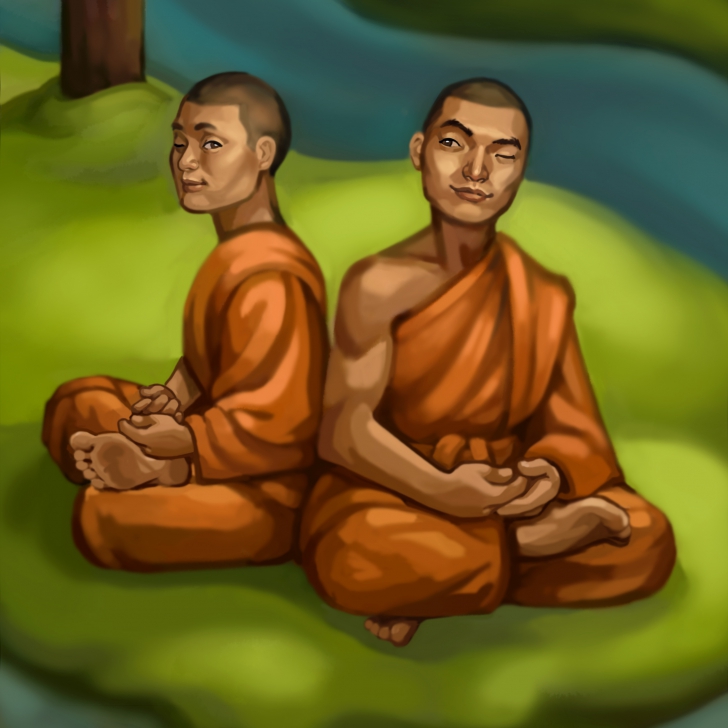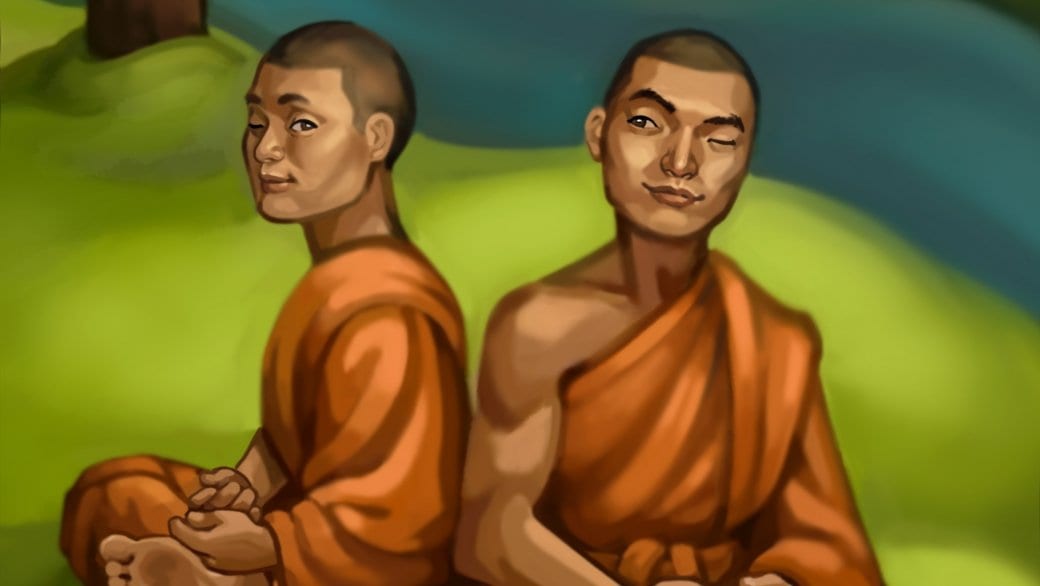In the legend, a great darkness crept over the ancient land of Nihon during the rule of Empress Jing — a darkness so great that people called it the “Eternal Night.” The empress investigated the reason, and was told by an old man that two Shinto priests had been buried together. A priest of a place called Shinu and a priest of Amano were special, life-long companions, (“good friends,” in many English translations) the empress learned, and when the priest of Shinu fell ill and died, the Amano priest wailed, “We have been friends together since our birth. Why in our death should there not be the same grave for both?” The Amano priest lay down beside his lifelong companion, promptly died, and they were buried together. Empress Jing had the bodies exhumed and buried separately, and sunlight shone forth.
What is interesting about this story from the Nihon Shoki, history and legend out of ancient Japan that was first compiled in 720 CE, is that the cause of the supernatural darkness was because two priests from different temples shared the same grave — not because two men who loved each other were buried together..
The tale of the Shinto priests illustrates how male same-sex love and sexuality was an integral part of Japanese spirituality for eons, acknowledged, at least in legend, as early as the third century. And, similar to the student-teacher relationships found in Greece, the Shingon and Tendai sects of Buddhism in early Japan had roots in hierarchical, age-structured relationships between monks and their younger students.
Another early legend, about the founder of Tendai Buddhist teachings, Saicho, depicts this best. As the story goes, the hermit was living on Mount Hiei when he found a beautiful, angelic boy. “I am really the Divine Child who rules the world,” the boy explained, and Saicho prostrated himself in worship.

Historian James Neill credits the preponderance of legends like these as a reason that pederasty and teacher-student relationships were normalized among Buddhist monks. “The association of beautiful boys with the ‘incarnate gods,’ then, provided for the monks a spiritual framework in which to place the natural appreciation that they felt for the sensual beauty of the younger males,” writes Neill. Furthermore, unlike Judeo-Christian religions, certain sects of Buddhism saw sexuality as merely one aspect of divine influence over the physical body.
By the time firebrand Catholic missionaries showed up in the mid-16th century, the perception that homosexuality and monastic life went hand-in-hand was so pervasive that Francis Xavier, later canonized as the “apostle of Japan,” wrote in 1549:
“There are monks who love the sin abhorred by nature; they admit it themselves; they never deny it . . . Nobody, neither man nor woman, young nor old, regards this sin as abnormal or abominable . . . The public, even if it does not find it desirable, does not at all consider it outrageous, for it has been the custom for a long time already.”
In 1579, Jesuit missionary Alessandro Valignano described homosexuality in Japan thusly: “In ancient Japan, I have been told, such a sin did not exist, and all lived in peace under the rule of a single king. But five or six centuries ago, an evil monk put forward the pernicious doctrine nowadays so widespread.” It’s not an accident that missionaries so desperately wanted to link Buddhism, pederasty and homosexuality together as a triforce of evil — what better way to eradicate an entrenched belief system and spread the purifying love of Christendom.
The “evil monk” that Valignano writes about was Kb-Daishi. Born a Japanese aristocrat named Kkai, he traveled to China in 804 at the age of 30 to study under Hui-kuo, a master of Esoteric Buddhism teachings brought to China from India. Hui-kuo named Kkai his successor and charged his student to return to Japan to spread the teachings of Esoteric Buddhism. Kkai did as he was bid, and in the ninth century, he became founder of the Shingon school of Buddhism in Japan.
In Japanese folklore, it is also said that Kkai brought back the knowledge of male same-sex love with him, legitimizing the same-sex relationships of monks and those among the middle and ruling class. This origin story of homosexuality in Japan was useful both for those who justified same-sex — sometimes pederastic — love, and for those who sought to dominate a culture by vilifying it. But male same-sex love in Japan extends backward in time, into legend, with two monks sharing a single grave.
History Boys appears on Daily Xtra on the first and third Tuesday of every month. You can also follow them on Facebook.
(Illustration: Yigi Chang/Daily Xtra)


 Why you can trust Xtra
Why you can trust Xtra


